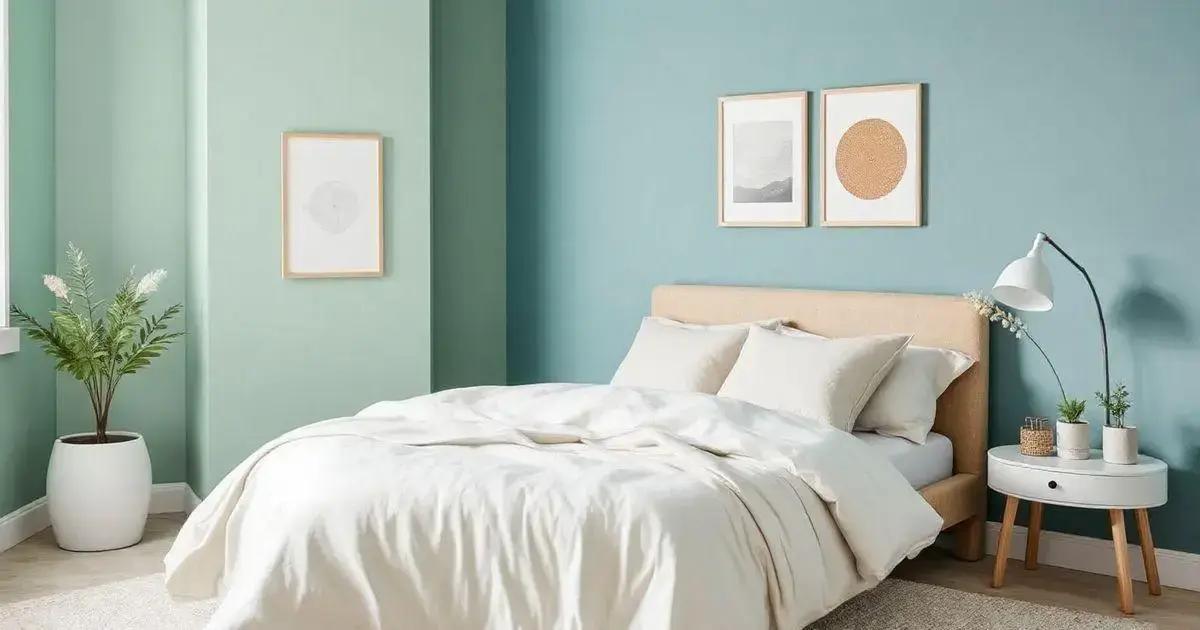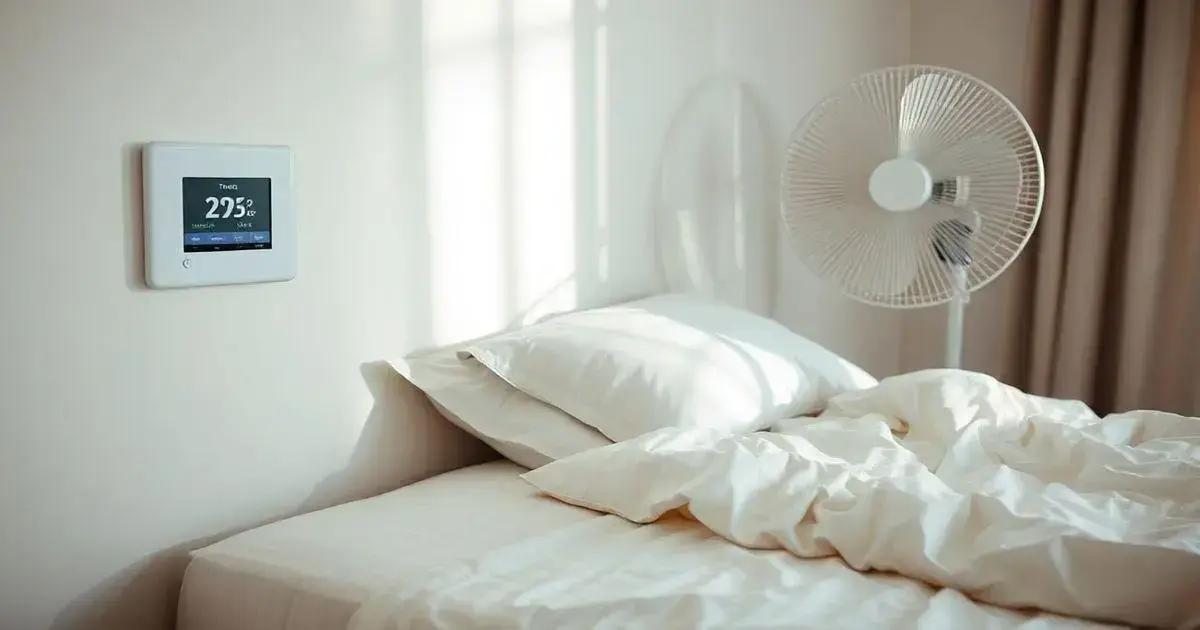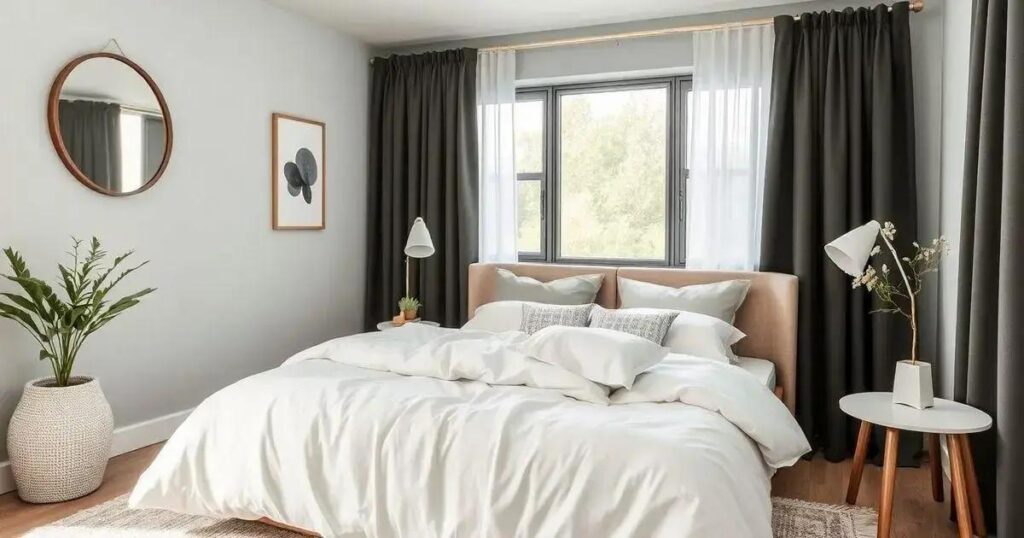To create a sleep-friendly bedroom environment, focus on choosing calming colors, selecting a comfortable bed and breathable bedding, controlling light and sound, and maintaining an ideal temperature between 60°F and 67°F. These elements work together to promote relaxation and improve sleep quality.
Creating a sleep-friendly bedroom environment is essential for restful nights and rejuvenating sleep. With effective bedroom design and decor, you can achieve a tranquil space that promotes relaxation. In this article, we will discuss the right colors to use, how to select the best bedding, the importance of controlling light and sound, and how to maintain the ideal room temperature to foster a perfect sleep environment.
Choose the Right Colors for a Calming Atmosphere

Choosing the right colors for your bedroom is crucial to create a calming atmosphere that promotes restful sleep. Soft and neutral hues, such as pale blues, greens, or grays, are excellent choices as they evoke tranquility and relaxation.
Psychological Effects of Colors
Colors have a significant impact on our moods and emotions. For instance, blue is known to lower heart rates and promote a sense of calm. Green can bring a feeling of balance and harmony, while neutral tones can create a soothing backdrop for your decor.
Accent Colors
While soft colors are ideal for primary walls, don’t shy away from incorporating accent colors through bedding, artwork, or decor pieces. These can add interest without overwhelming the senses. Consider colors like soft lavender or a muted peach to inspire warmth.
Consistency and Balance
Ensure that all elements in your bedroom complement each other. Balance is key when selecting your color palette. Test color samples on walls to see how they look at different times of day and under various lighting conditions.
Remember, the ultimate goal is to create a restful sanctuary that invites sleep. By carefully selecting your bedroom colors, you can significantly enhance your sleep-friendly environment.
Select the Best Bed and Bedding

Selecting the best bed and bedding is vital for creating a sleep-friendly environment. A comfortable bed is the foundation to a good night’s sleep. Invest in a quality mattress that supports your sleeping position. Memory foam and latex mattresses are popular options as they contour to your body.
Consider Your Sleeping Position
Your preferred sleeping position affects the type of mattress that will work best for you. Side sleepers may prefer a softer mattress to cushion their shoulders and hips, while back sleepers generally benefit from medium-firm support. Stomach sleepers might need a firmer mattress to prevent back pain.
Bedding Materials Matter
Choose bedding materials that feel comfortable against your skin. Cotton sheets with a thread count of 200-400 provide breathability and comfort. Bamboo and linen are also excellent alternatives offering softness and temperature control.
Pillows for Comfort and Support
Don’t forget about pillows. A good pillow should keep your head, neck, and spine aligned. Look for pillows that match your sleeping style: memory foam or down pillows can offer great support. Consider adjustable pillows that allow you to customize height and firmness.
Accessorize with warm blankets and soft throws that add to the coziness of your bed. These elements work together to foster a comfortable atmosphere that encourages restful sleep.
Control Light and Sound for Better Sleep

Controlling light and sound in your bedroom is essential for achieving better sleep. A dark, quiet environment signals your body that it is time to rest. Blackout curtains are an effective way to block external light from street lamps or the morning sun. Consider choosing curtains that fit tightly against the window for maximum darkness.
Consider Light Sources
In addition to curtains, remove any electronic devices that emit light, such as alarm clocks or chargers. You can also use eye masks if light continues to be an issue. Aim for a nightstand that isn’t cluttered with items that can light up.
Managing Sound Levels
Smoothing out disruptive noises in your environment can be achieved with the use of white noise machines or fans. These devices can mask sounds like car traffic and barking dogs. If you don’t have these tools, consider using earplugs to block out unwanted noises.
Creating a Calming Environment
Soft, calming sounds, like nature noises or gentle music, can also help create a peaceful environment. Try using calming apps or sleep tracks that promote relaxation before bed.
Establish a bedtime routine that encourages your body to wind down. This can include dimming lights an hour before sleep and using aromatherapy to create a soothing ambiance. Controlling both light and sound will help support a restful environment.
Maintain an Ideal Room Temperature for Comfort

Maintaining an ideal room temperature is crucial to ensure comfort while sleeping. Most experts recommend keeping your bedroom between 60°F and 67°F (15°C to 19°C) for optimal sleep quality. Temperatures that are too hot or too cold can disrupt your sleep cycle.
Adjust Your Bedding Seasonally
Your choice of bedding can influence how comfortable you feel during the night. Use lighter materials like cotton or bamboo in warmer months and switch to warm flannel or duvets during cooler seasons. This ensures that your bed stays comfortable regardless of the outside temperature.
Utilize Fans and Air Conditioning
During hot summer nights, consider using a fan or air conditioning to help keep the room cool. A tree-placed fan can create a gentle breeze that promotes circulation. In the winter, ensure that your heating system isn’t too overwhelming; a simple thermostat can help regulate the temperature effectively.
Experiment with Sleepwear
Your sleepwear also plays a role in temperature control. Opt for breathable fabrics like cotton or moisture-wicking materials that help to regulate body temperature, keeping you cool when it’s hot and warm when it’s cold.
Don’t forget about ventilation; open windows when possible to let fresh air circulate through the room. Keeping your bedroom at a comfortable temperature enhances your chances of falling asleep faster and enjoying deeper, more restorative sleep.
Creating Your Sleep-Friendly Bedroom Environment
Incorporating the right elements into your bedroom can significantly improve your sleep quality. By choosing calming colors, investing in a comfortable bed and bedding, controlling light and sound, and maintaining an ideal room temperature, you can create a sanctuary that invites rest and relaxation.
These adjustments not only enhance your sleep experience but also promote better overall health and well-being. Remember, a peaceful environment tailored to your needs will make a world of difference in how well you sleep each night.
By following these tips, you’ll be well on your way to designing a sleep-friendly bedroom that supports restful nights and refreshed mornings.
FAQ – Frequently Asked Questions about Creating a Sleep-Friendly Bedroom Environment
What colors are best for a calming bedroom atmosphere?
Soft colors like pale blues, greens, and grays are ideal for creating a calming atmosphere that promotes relaxation and sleep.
How can I choose the right bed and bedding?
Select a mattress that supports your sleeping position, and use breathable bedding materials like cotton or bamboo to enhance comfort during sleep.
What are some methods to control light in my bedroom?
Using blackout curtains, removing electronic devices that emit light, and utilizing eye masks can help create a dark environment conducive to sleep.
How can I reduce noise in my bedroom for better sleep?
Consider using white noise machines, fans, or earplugs to mask disturbing sounds and create a quieter sleep environment.
What is the ideal room temperature for sleep?
Aim to keep your bedroom between 60°F and 67°F (15°C to 19°C) for optimal sleep quality.
How does bedding choice affect sleep?
The right bedding can regulate your body temperature and enhance comfort, contributing to a better sleep experience.












